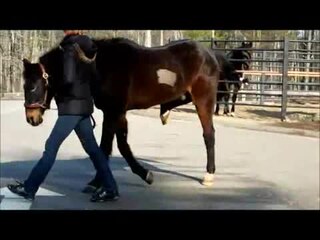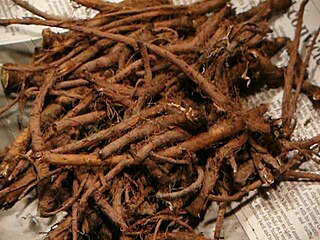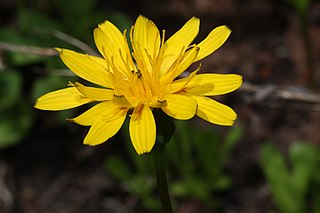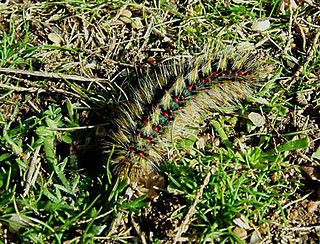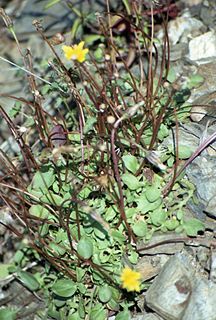False dandelion is a common name for a number of plants similar to dandelions.
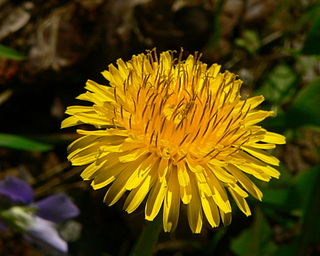
Taraxacum is a large genus of flowering plants in the family Asteraceae, which consists of species commonly known as dandelions. The genus is native to Eurasia and North America, but the two commonplace species worldwide, T. officinale and T. erythrospermum, were introduced from Europe and now propagate as wildflowers. Both species are edible in their entirety. The common name dandelion is given to members of the genus. Like other members of the Asteraceae family, they have very small flowers collected together into a composite flower head. Each single flower in a head is called a floret. In part due to their abundance along with being a generalist species, dandelions are one of the most vital early spring nectar sources for a wide host of pollinators. Many Taraxacum species produce seeds asexually by apomixis, where the seeds are produced without pollination, resulting in offspring that are genetically identical to the parent plant.
- Hypochaeris radicata , also known as catsear, the plant most commonly referred to as false dandelion
- Hypochaeris other catsears related to H. radicata
- Agoseris , also known as mountain dandelions
- Crepis , also known as hawksbeards
- Hieracium , also known as hawkweeds
- Leontodon , also known as hawkbits
- Nothocalais
- Pyrrhopappus
- Scorzoneroides , also known as hawksbits

Hypochaeris radicata, also known as catsear, flatweed, cat's-ear, hairy cat's ear or false dandelion, is a perennial, low-lying edible herb often found in lawns. The plant is native to Europe, but has also been introduced to the Americas, Japan, Australia and New Zealand where it can be an invasive weed. It is listed as a noxious weed in Washington State, in the northwestern United States.
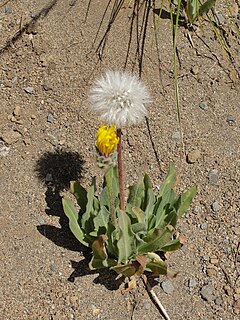
Agoseris is a small genus of annual or perennial herbs in the Asteraceae or sunflower family described as a genus in 1817.

Crepis, commonly known in some parts of the world as hawksbeard or hawk's-beard, is a genus of annual and perennial flowering plants of the family Asteraceae superficially resembling the dandelion, the most conspicuous difference being that Crepis usually has branching scapes with multiple heads. The genus name Crepis derives from the Greek krepis, meaning "slipper" or "sandal", possibly in reference to the shape of the fruit.

